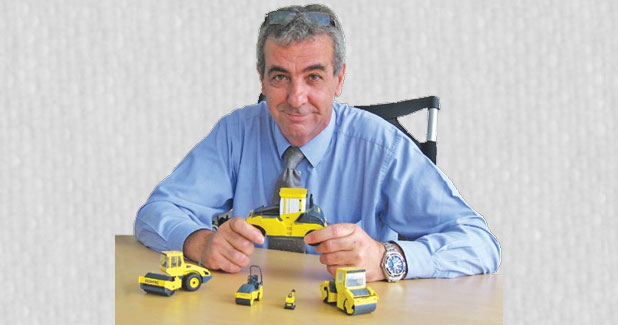
Market for compactor is foreseen in the roads segment
Where do you see the brightest opportunities for compactors?
Indian road building activity has already picked up in the current fiscal year and even for the coming years a good budget outlay is also envisaged. This would mean that the immediate requirements and market for compactor is foreseen in the roads segment. The policy reforms with respect to private participation expected in the road and railway sector is also going to boost the demand soon. Is there any shift in demand towards higher capacity compactors? If so please specify the details.
Unfortunately, Indian compaction regulations are still describing the size of machines to be used and the max heights of layers to be put down. This very much does not leave room for bigger machines which would be more efficient to be used. We hope that the related regulations will open up in the future to describe the final compaction results to be achieved only.
Leaving it up to the contractors how to achieve the results. This would open up the door for more efficient machinery to be used. At the same time, I would help to reduce the overall construction cost. For example: if the thickness of layers can be increased, it not only will reduce time and cost for spreading out the layers, but also will shorten the compaction time.
Reducing cost and time for each project allows to make more roads with the same amount of budgets available.
What kind of compactors are most in demand, and why? What are some latest features that consumers are demanding?
India, is still using relatively low performance compaction equipment, as specifications are not asking for more or even allowing to use heavier, more powerful equipment. As such, all machines are very equal in regard to their main specs like weight or size. However, contractors demanding machines with high reliability, low service demands and low running costs to make their business profitable. These demands fit to all kind of compactors, soil and asphalt. Beside these basic requirements, ease of operation is a point of increasing interest. Specifically of asphalt compactors (tandem rollers and rubber tired rollers), it is important that machines can change travel directions smooth and easy. Not leaving any marks on the asphalt. While tandem rollers already being made with hydrostatic drive systems since decades, rubber tired rollers were still available in both systems, mechanical and hydrostatic. The hydrostatic drive systems like on Bomag?s BW 27RH is leading in this regard.
In other countries of Asia, trends are already ahead of those in India. We see more demands for roller integrated compaction measurement systems like Bomag?s BTM and BCM. And even automatic vibration systems that adjust themselves to pre-set compaction requirements. Besides, telematics systems starting to be used more often. Allowing to monitor the machines position and condition for an easy fleet management. It will take some time before Indian contractors will start using such systems. With increasing competition in the contractor business, one has to be ahead of competition to be successful in the long run.
What size compactors do MoRTH and NHAI projects specify?
NHAI and MORTH specify only 10 to 11 tonne compactors as the maximum layer thickness compacted in the highway projects is limited to 250 mm. However, this should be changed for speeding up the projects and safe construction cost, by deploying higher tonnage compactors and higher layer thickness.
Many stretches in Eastern and some parts of Western India requires soil stabilisation to improve the soil bearing capacities. These stretched could require bigger compactors to compact the 400 mm or 500 mm layer of stabilised soil. Here, heavy soil compactors of minimum 19 to should be used, but even up to 26 to can be applied effectively for such thick stabilised layers - if regulations will allow to do so.
How large is the compactor market in India and how big do you expect it to grow?
The Indian compaction machinery market has been stagnant over the last three years at around 3,000 units in total. With a split of about 50-60 per cent to single drum rollers that are used for soil compaction and the remaining 50-40 per cent of machines being tandem rollers for asphalt applications. The current prediction for market growth in India is expected to be around 20 per cent per annum, provided the infrastructure investments keep floating and the economy keeps growing as expected.


 +91-22-24193000
+91-22-24193000 Subscriber@ASAPPinfoGlobal.com
Subscriber@ASAPPinfoGlobal.com